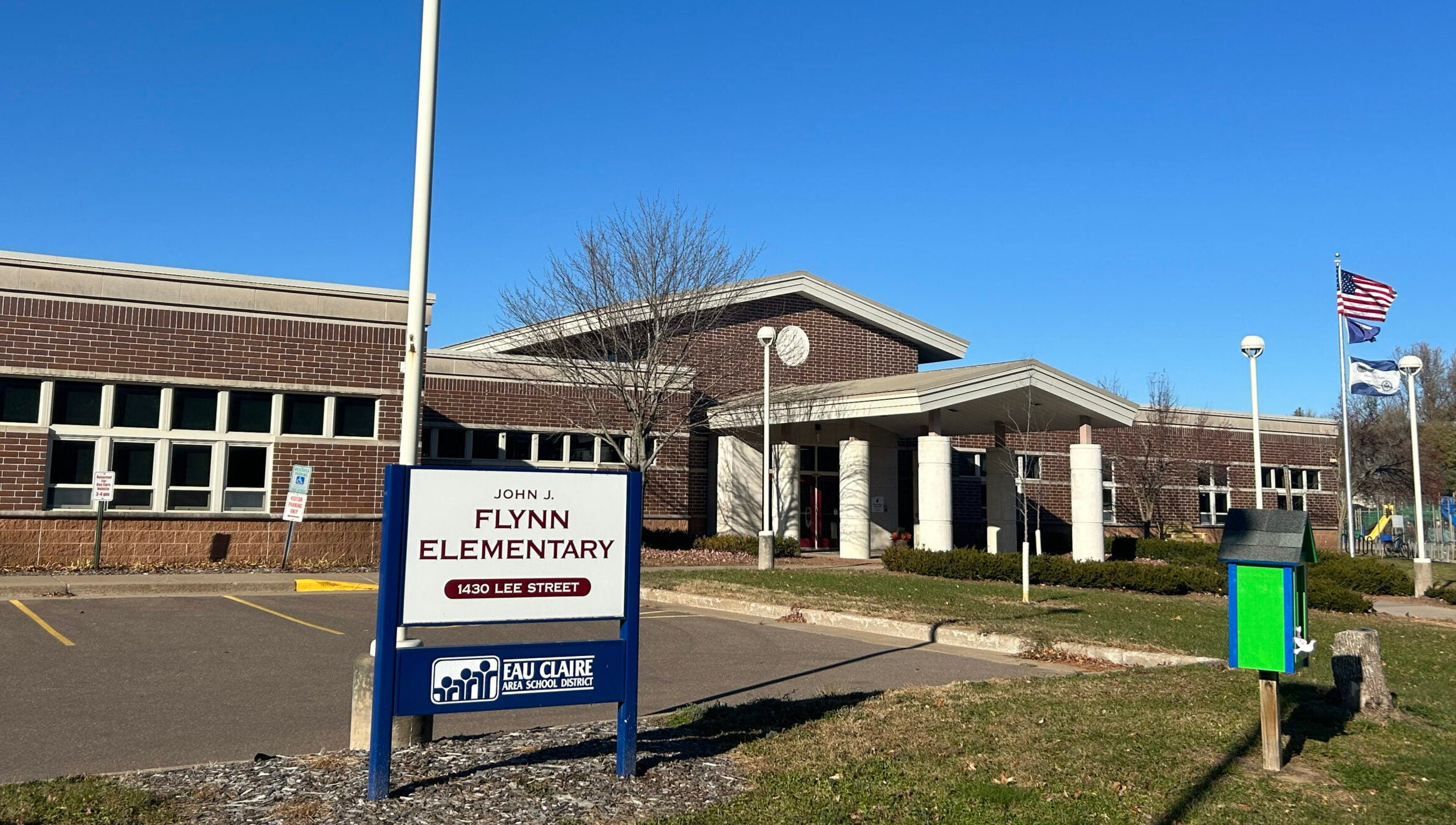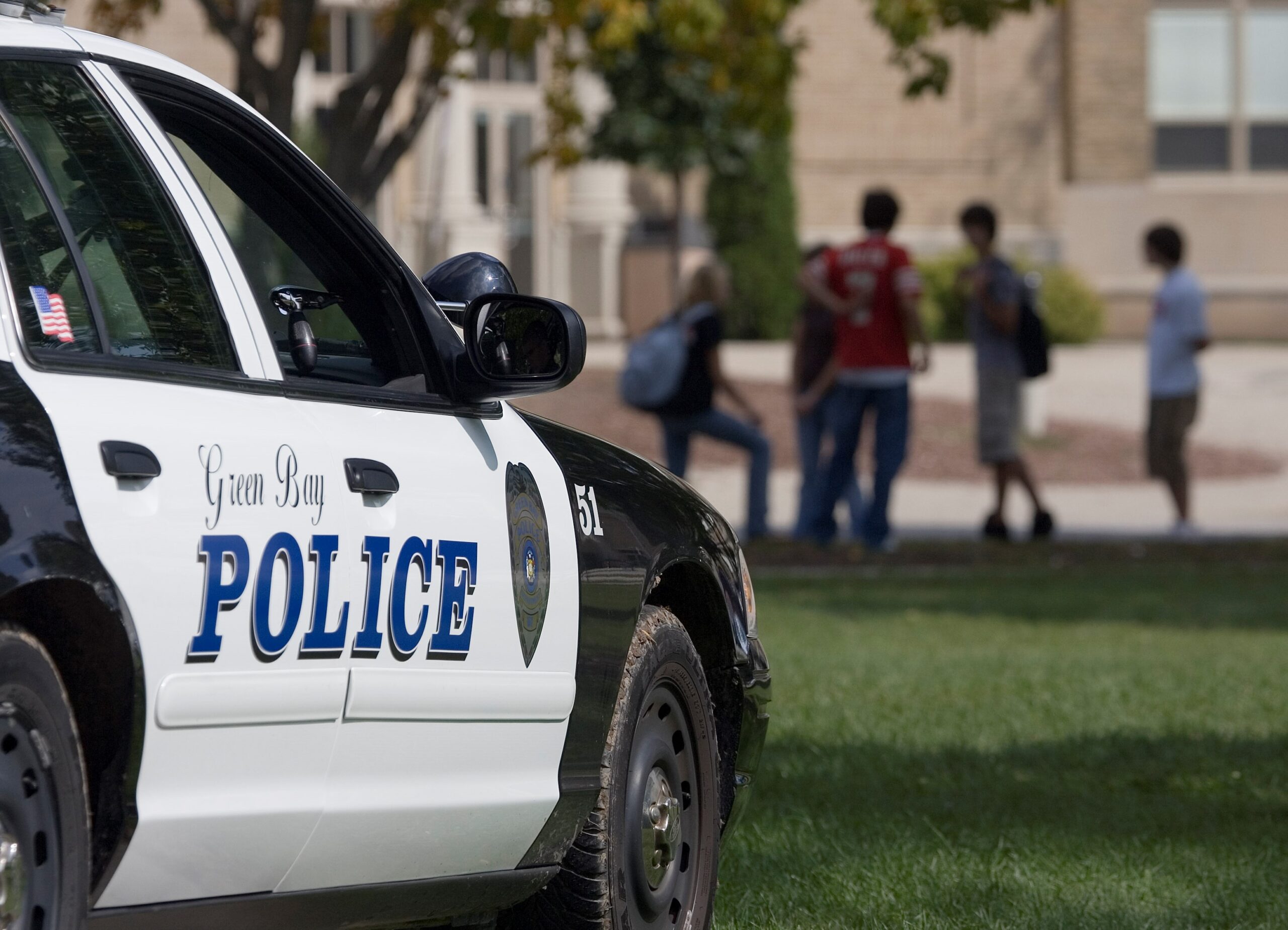When Kaylee Delorey dropped her eldest daughter off on her last day of first grade, a police perimeter surrounded the school.
It was the day after a gunman opened fire, killing 19 children and two adults at Robb Elementary School in Uvalde, Texas in 2022. The increased security was meant to make parents feel safer sending their kids to school. For Delorey, it had the opposite effect.
“I’ve never felt so sick to my stomach in my life, and they were just there as an extra precaution,” Delorey, whose family lived in Birmingham, Alabama at the time, said. “They had made that plan for every elementary school in the school district in an effort to make parents feel safer, but it had the opposite effect for me.”
News with a little more humanity
WPR’s “Wisconsin Today” newsletter keeps you connected to the state you love without feeling overwhelmed. No paywall. No agenda. No corporate filter.
“I went home and had a panic attack and just cried until the moment I got to pick her up,” she added.
Now, Delorey is getting ready to send her youngest to school for the first time in Sun Prairie, and the December school shooting at Abundant Life Christian School in Madison has brought her anxiety to the forefront.
“Now we just have to start preparing ourselves and her for those kinds of things that they’re going to encounter,” Delorey said. “And it’s emotional, and it’s unfair that we’ve allowed ourselves to get to this point where it’s our kids’ problem.”
As the school year draws to a close, parents and educators are reflecting on how the tragedy at Abundant Life has altered the Madison community. They’re also having more conversations about how to keep kids safe at school — and at home.
Gina Aguglia, who directs critical response for the Madison Metropolitan School District, said the district has been leaning on an exhaustive school safety plan that details proactive strategies, how to respond in the moment and how to move forward after a crisis.
“Anytime any type of emergency happens, we want to debrief it and discuss it,” she said. “This one being such a large impact to our community, there’s been a lot of debriefing and talking with our community partners, as well as our internal structures, working with different agencies.”
Part of being proactive is practicing for the worst case scenario.

‘Locks, lights, out of sight’
Wisconsin state law requires all K-12 public and private schools to perform lockdown drills at least twice a year.
The process looks different depending on the district, but the law states the exercise should “drill all pupils in the proper method of evacuation or other appropriate action in case of a school safety incident.”
In Madison, lockdown drills are centered on students being safe, and quiet, in their classrooms.
That’s according to Aguglia with the Madison school district. She said the drills vary depending on age, but the goal is for students to practice following directions.
“We would have an announcement that would say, ‘Locks, lights, out of sight.’ We would ask all teachers and students to get into a place in their classroom where they are not visible in the hallway, that they are quiet and they’re awaiting instructions,” she said.
At the elementary level, if a student is in the hallway, staff on the critical response team shepherd them into the nearest classroom.
“We’re really reminding kids at the elementary level, it does not have to be your teacher … someone you trust — you might not know them — but they’re going to bring you into their classroom and keep you safe,” Aguglia said.

In middle and high schools, drills often happen during pass time — when students are in between classes.
“It’s much easier when everyone’s already in their classrooms,” Aguglia said. “But we know that an emergency can happen at any point, so we’re working on having kids go into a lockdown while they’re maybe transitioning from first to second hour and those have been going really well.”
Aguglia said none of the district’s safety practices have changed since December, but there has been a lot of debriefing among staff and community partners.
“When something like this happens anywhere in the country, it creates a lot of stress and anxiety. But then for it to happen in our city, is just incredibly tragic,” Aguglia said. “While we do lots of things to prepare and to know how to respond, we really want to make sure that people understand that we have to balance a safe and welcoming environment.”
Kennedy Elementary School Principal Vanessa Kent said communication with families and students is key to ensuring drills go smoothly — and don’t cause trauma. Emails go out to parents two weeks, one week and the day before a drill. On the day of, students are reminded during morning announcements.
Kent also makes sure she keeps the mood positive.
“Once it’s time to do the drill, I’ll get on (the intercom). I usually have a very sing-songy voice. I’m very upbeat, keeping it light,” Kent said.
That attitude and focus on communication extends to schools across the district and has been a relief for parent Lindsey Buscher. Her kids are in second and fifth grade at Chávez Elementary School on Madison’s southwest side.

Before her son started kindergarten Buscher said she was “terrified that [the drills] were going to be really traumatizing.” But after having his teacher walk her through the process, she was immediately reassured.
“At least in Madison, a lot of the schools are taking the research very seriously, and they pay really close attention to the right and wrong ways to do things,” she said.
But even run in the most thoughtful way, Delorey wonders about the message lockdown drills send to kids.
“Just the fact that kids as young as 6 years old have to hear from their adults, this is a scenario that not only is possible, but is now a statistic probability that you are going to encounter in your childhood, so we have to practice hiding,” Delorey said. “It’s awful.”
Delorey and Buscher say school safety measures alone aren’t enough.
“The school can’t control if a parent isn’t securing their firearm … you can’t harden every building. You can’t have detectors at every door of every building ever,” Buscher said.

Safe storage: locked, unloaded and separate from ammunition
Buscher is the state legislative lead for the Wisconsin chapter of Moms Demand Action, an advocacy group that promotes gun violence prevention.
She got involved in 2018, after 17 people were shot and killed at Marjory Stoneman Douglas High School in Parkland, Florida.
“I had a newborn and my older son was … getting ready to go to kindergarten the following year. And I saw everything that was happening, and I was like, ‘Nope, I can’t just keep sitting on the sidelines.’” Buscher said.
A major focus of the organization and Buscher’s efforts are to educate parents and gun owners on safe storage. She relies on the Be SMART campaign that promotes responsible gun ownership to reduce child gun deaths.
Be SMART emphasizes storing guns locked, unloaded and separate from ammunition. It also works to normalize conversations between parents about whether they have guns at home and how they’re stored.
Buscher said she’s had more conversations about gun safety with friends and other parents since the December school shooting in Madison.
“We can’t take everybody’s guns away, and we don’t want to,” she said. “So ensuring that where your kids are is a safe space is a really huge thing.”
The Madison school district also points parents to the Be SMART campaign.
“It’s all nonpartisan and just really focuses on, regardless of if you have guns or if you’re going to someone’s house who might have guns, what are some things to ask? What are some ways to stay protected?” Aguglia, with the district, said.

‘Kids are going to school to be loved’
Kent, the principal at Kennedy Elementary, said her school has done more investigations into bullying since the shooting at Abundant Life. She’s also had more conversations about handling conflict between students and keeping students safe.
“When you hear about situations like this, your mind kind of spirals and wonders, what steps can we take at the elementary level to help students with their mental health,” Kent said
“There have been times since December that I’ve leaned on Gina [Aguglia] to help me problem-solve around mental health and just really wrapping a team around a family and making sure that they feel supported,” she added.
Kent has a three-year-old son who will eventually go to school in Madison. And while she says there’s always risk assessment as a parent, the “protective factors” kids get in school make it worth it.
“To ease anyone’s mind, most of the time at school, kids are going to school to be loved and cared for and learning,” Kent said. “I think there’s so many benefits to that.”

Wisconsin Public Radio, © Copyright 2025, Board of Regents of the University of Wisconsin System and Wisconsin Educational Communications Board.






